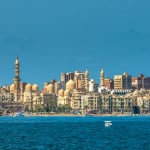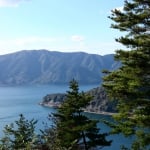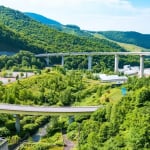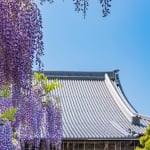Name: Gyeongju Historic Areas
Address: 757 Taejong-ro, Gyeongju-si, Gyeongsangbuk-do, Republic of Korea
Official/Related Site URL: http://guide.gyeongju.go.kr/deploy/jpn/enjoy/
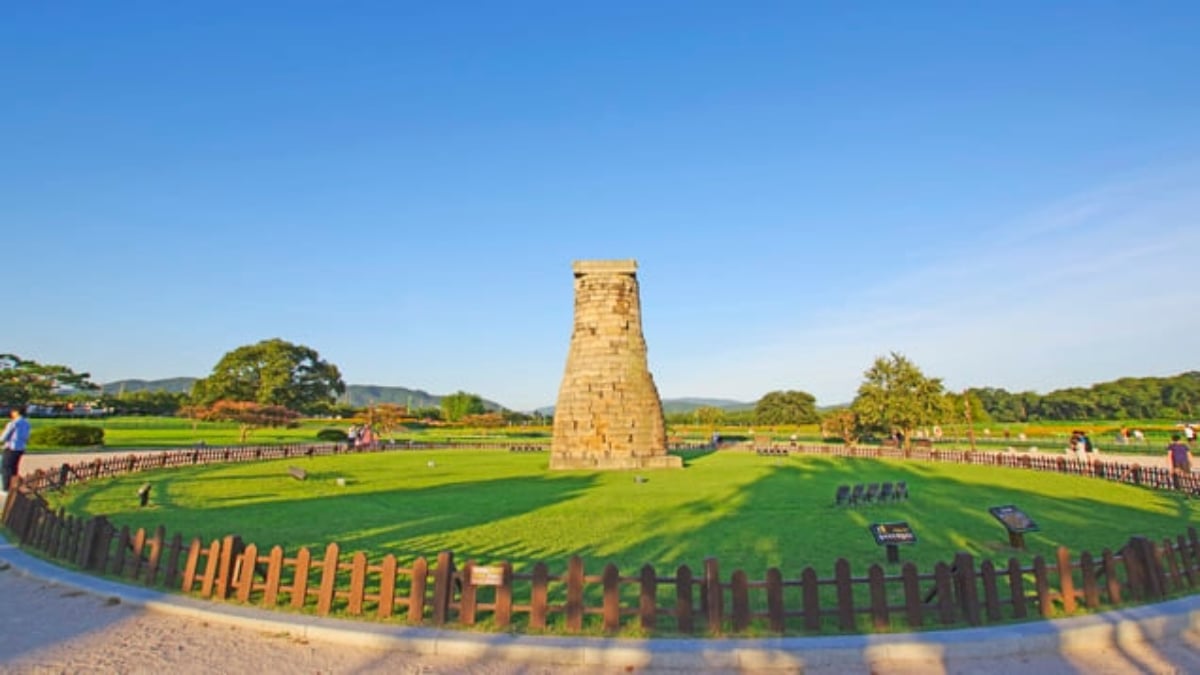
The whole town is a World Heritage Site?! Enjoy time travel in the Gyeongju Historic Area in Korea
Located in the southern part of South Korea, Gyeongju was once the capital of the powerful Silla kingdom, which unified the Korean Peninsula. Often called the “Nara of Korea,” it is a city densely packed with Korean history.
Gyeongju is home to a vast number of historical sites, including several that are UNESCO World Heritage Sites. Among them, the “Gyeongju Historic Areas” span such a wide area that they cover most of the central part of Gyeongju city.
Let’s explore the Gyeongju Historic Areas, which are divided into five distinct zones.
table of contents
[x] close
The whole town is a World Heritage Site?! Enjoy time travel in the Gyeongju Historic Area in Korea
What are the Gyeongju Historic Areas?
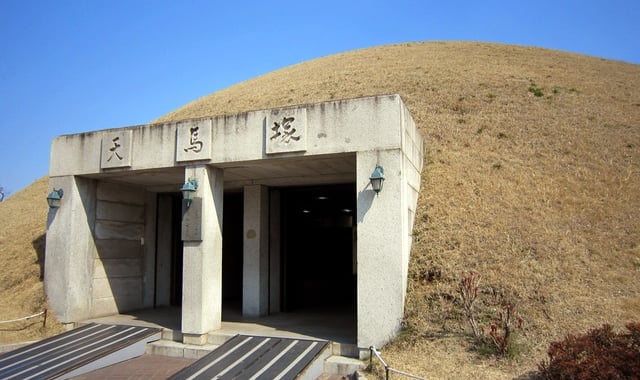
The historic city of Gyeongju, which retains traces of the Silla dynasty, is also known as the “Museum Without Walls.” It was designated a UNESCO World Heritage Site in 2000 under the name “Gyeongju Historic Areas.” Reflecting the Buddhist roots of the Silla kingdom, the area is known for its many excavated temples, statues, and Buddhist artworks. The sites are grouped into five areas based on their characteristics—let’s explore them one by one.
The Namsan (South Mountain) district is essential when discussing the Buddhist art of the Silla dynasty. This mountain area contains 37 Buddhist relics, including stone pagodas and statues. The must-see highlight here is the massive “rock-carved Buddha” sculpted into a cliff face.
Also located in Namsan is the tomb of Queen Seondeok, the first reigning queen of Silla.
The Wolseong district is the main area of the Gyeongju Historic Sites and was once the location of the royal palace.
Here you’ll find “Cheomseongdae,” the oldest existing astronomical observatory in East Asia, and “Gyerim,” a forest said to be the birthplace of the founder of the Silla Kim dynasty.
The only existing artwork from the Silla dynasty, the “Heavenly Horse Painting,” was discovered in “Cheonmachong” (Heavenly Horse Tomb) located in the Daereungwon district. This tomb is open to the public, and it’s well worth taking time to explore. The large area also contains 23 burial mounds of Silla kings and queens, forming a full-scale burial mound park.
Other highlights include the Sanseong district, which has remains of a stone fortress that once protected Silla, and the Hwangnyongsa district, a vast archaeological site where over 40,000 relics have been excavated.
Why not enjoy a time-travel experience through the rich history of the Silla dynasty in the Gyeongju Historic Areas?
Access to the Gyeongju Historic Areas
The best way to reach Gyeongju is from Busan. It takes about one hour by express bus or just under 30 minutes by KTX (Korea’s high-speed train). Both options are available without advance reservations.
However, if using KTX, note that it stops at Singyeongju Station, which is slightly away from the city center. To reach Gyeongju Station, you’ll need to transfer at Dongdaegu Station.
There’s no subway system in Gyeongju. Within the Gyeongju Historic Areas, you can only get around by bus or taxi. City buses No. 10 and No. 11 are convenient as they cover many of the heritage spots. Chartering a taxi with a guide by the hour is also a good option. For those who want to explore at a relaxed pace and also enjoy the scenery outside the historic areas, renting a bicycle is recommended.
You can also travel to Gyeongju from Seoul, but it takes nearly 4 hours by express bus and about 2 hours by KTX—more than twice the time from Busan. While this works well for overnight stays, it’s not recommended for a day trip.
Highlights of the Gyeongju Historic Areas
◆ Anapji Pond
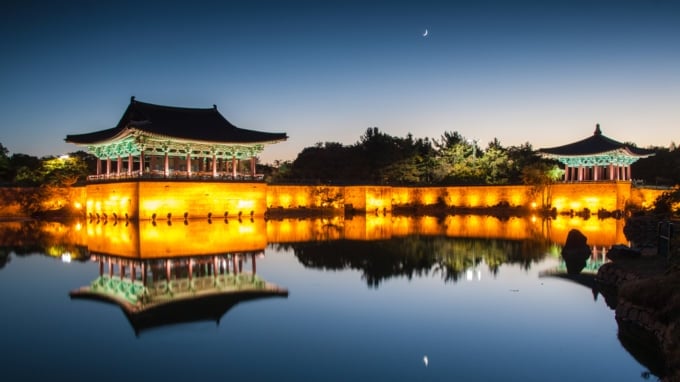
The main area of the Gyeongju Historic Sites is the Wolseong district. Among the many beautifully illuminated sites at dusk and night, the most popular spot is Anapji Pond. This man-made pond, created during the Silla era, was originally called Wolji (Moon Pond). Aristocrats are said to have floated boats and enjoyed leisure time here.
The site features a reconstructed palace called “Imhaejeonji,” which was once a secondary palace of the Silla kings. The carefully maintained gardens reflect the buildings and surrounding trees on the pond’s surface, creating a truly magical scene.
Autumn, when the foliage is vibrant, is the best season to visit. Many artifacts excavated from Anapji are displayed in the Wolji Hall of the Gyeongju National Museum—don’t miss it!
◆ Cheomseongdae Observatory
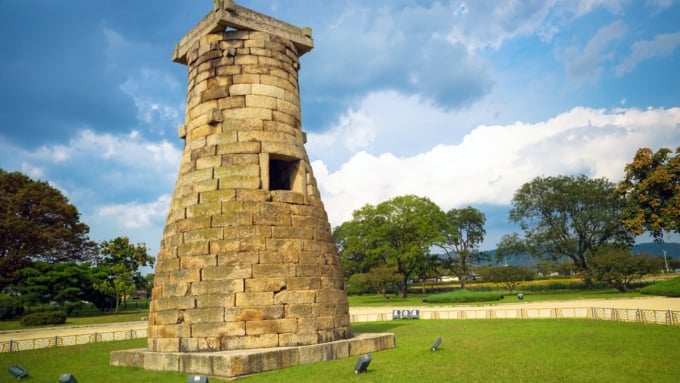
Cheomseongdae, the iconic observatory in the Gyeongju Historic Areas, was built during Queen Seondeok’s reign and is the oldest astronomical observatory in East Asia. People once climbed inside via a central window using a ladder and ascended to the top for stargazing.
At the time, astronomy was used to determine agricultural schedules and even played a role in state affairs. It’s awe-inspiring to think it functioned as a central organ of governance.
Tours of the Gyeongju Historic Areas often begin with Cheomseongdae. As mentioned earlier, it’s just a short walk from Anapji and the Daereungwon district, where royal tombs are located, so visiting them together is recommended.
It’s also fun to look out for manhole covers and streetlights around Gyeongju that feature illustrations of Cheomseongdae.
◆ Gyeongju National Museum
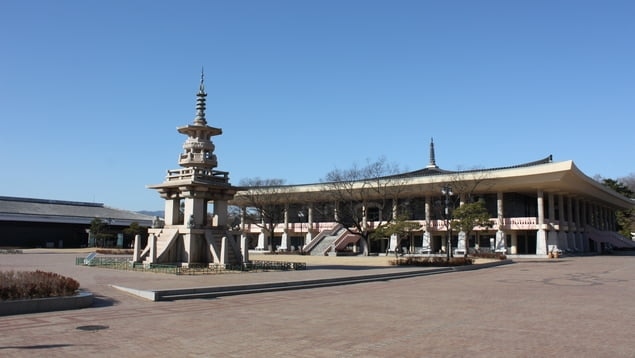
The Gyeongju National Museum houses artifacts excavated from the entire Gyeongju region, including the Gyeongju Historic Areas, a UNESCO World Heritage Site. As the second-largest national museum in South Korea, it features three exhibition halls and an outdoor display area with approximately 250 artifacts. In total, including the outdoor exhibits, over 2,500 items are on display across the vast grounds!
Even a quick tour of the museum takes more than two hours.
Visiting the museum after exploring the Gyeongju Historic Areas offers a wealth of discoveries and makes for a highly enjoyable experience.
The main highlight inside the museum is the beautiful golden crown known as the “Cheonmachong Gold Crown,” excavated from the Cheonmachong (Heavenly Horse Tomb).
In addition, an astonishing array of national treasures such as gold ornaments and bronze swords are generously exhibited without reserve.
As you enter the outdoor exhibit area, the first thing to catch your eye is the national treasure “Sacred Bell of King Seongdeok” (Seongdeok Daewang Sinjong). This is the largest and oldest bell in Korea and is also known as the “Emille Bell.”
There is a tragic legend associated with the bell—because the sound wouldn’t resonate properly after several casting attempts, a child was supposedly sacrificed and used in the final casting. The bell is said to emit a sound like a child crying “Emille (Mother),” hence the name “Emille Bell.”
The Gyeongju National Museum, home to treasures not only from Gyeongju but representative of all Korea, is a World Heritage Site that deserves a visit at least once.
Why not delve into history in Gyeongju, the ancient capital where the brilliance of the Silla dynasty still shines?
Important notes when visiting the Gyeongju historic areas
While many sites in the Gyeongju Historic Areas are outdoors, it becomes completely dark after sunset, so it's best to finish sightseeing by early evening. The Wolseong district is beautifully illuminated at night, but once you move away from the central area, there are few streetlights and it becomes pitch black.
Also, while the burial mound park in the Daereungwon district is open until 10 PM, it is vast, dark, and sparsely populated at night, so solo female travelers may want to avoid visiting it alone after dark.
There are rental bicycles available within Gyeongju city, and many people use them to travel to and around the Gyeongju Historic Areas.
However, please be very cautious—especially at night, when it’s dark and visibility is poor—not only for cyclists but also for pedestrians, to avoid accidents.
◎ Summary
Gyeongju offers an abundance of attractions. While it is possible to visit on a day trip from Seoul or Busan, it is highly recommended to spend ample time to thoroughly explore everything the city has to offer.
In addition to the Gyeongju Historic Areas introduced here, the city is also home to other stunning World Heritage Sites such as “Bulguksa Temple and Seokguram Grotto” and the “Yangdong Folk Village.”
Be sure to visit the Gyeongju Historic Areas and experience the depth of Korea’s rich history!
RELATED ARTICLES
REGIONS
CATEGORIES
FEATURED ON South Korea
-
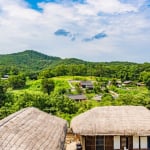
600 Years of Radiant Tradition: Korea’s Historic Villages of Hahoe and Yangdong
-
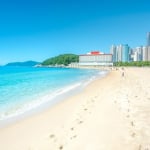
4 recommended beaches in Busan, South Korea! Let’s enjoy the sea in summer!
-

Smooth Skin with Seawater Hot Springs! 4 Recommended Jjimjilbangs Near Busan Station
-

Shopping in Myeongdong! Must-Check Korean Brands Introduced!
-
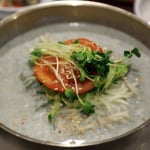
If You’re Having Lunch in Seoul’s Gourmet Battleground, Myeong-dong, This is the Place! 3 Recommended Spots
MOST POPULAR ON South Korea
-
 1
1Doha: Must-see Attractions in the Capital of Qatar
-
 2
2Toronto: 10 Things to do in this Picturesque Canadian City
-
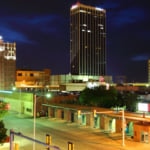 3
3Amarillo: A City Famous for It’s Amazing Canyons, Great History and Music
-
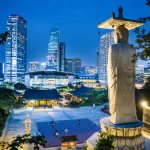 4
4South Korea: Dazzling Scenery, Rich Culture and Fascinating History
-
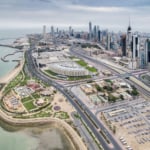 5
5Kuwait: A Country in Middle East Asia Famous for Hot Sand Dunes and Stunning Cityscape


